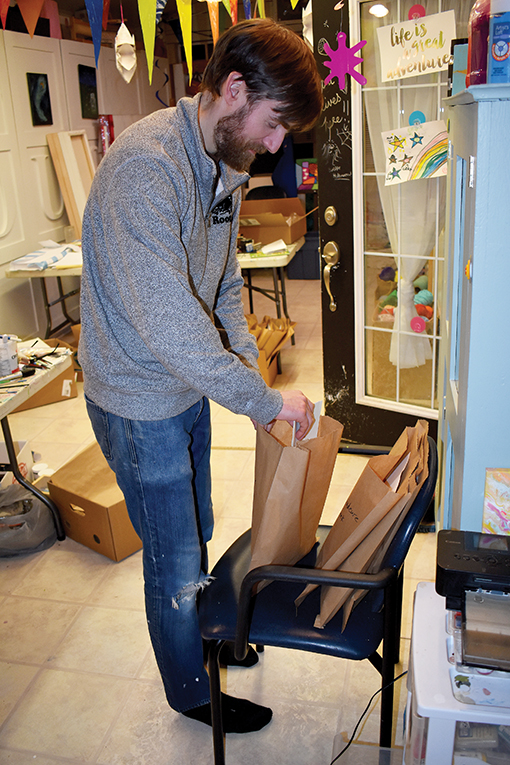Has agriculture lost its artistry?
Posted on January 28, 2021 by Maple Creek Geoff Phillips gets are material prepared for upcoming workshops.
Geoff Phillips gets are material prepared for upcoming workshops.From the 18th to early 20th century, breeders often hung oil paintings of their prize cow or bull in their homes. It was a way of displaying a life’s work, showcasing the aesthetic appeal of animals, and, no doubt, flaunting affluence.
It was an age when art and agriculture were entwined.
Go back much further in time, and cave paintings of cattle and horses also pointed to a close relationship, with humans revering animals.
What about today? Has agriculture lost its artistry? What does agriculture have to do with culture? Is agribusiness heading in the right direction? Are we losing touch with our heritage, and the artistry involved in raising livestock?
These are some of the questions that will be addressed during a series of free art workshops in Maple Creek inspired by local ranching history. The purpose is to help the next generation of agribusiness benefit from learning how technology is impacting their trade.
The five sessions at the C.M. Glascock Building will be led by artist Geoff Phillips and feature art history presentations by the S.W. Saskatchewan Oldtimers’ Museum. Technical support and documentation will be provided by Geoff’s wife, Connie, also an artist.
The first workshop starts on Thursday, Jan, 28, at 7pm.
The initiative has been made possible a $10,000 Artists in Communities-Projects grant from SK Arts. Phillips said he was delighted to receive the grant.
“It is a very exciting project,” he said, adding that he hoped it would inspire critical thought about agriculture and its rich art history.
So far people from Maple Creek, Shaunavon, Frontier, Consul, Leader, Eastend and Tompkins have registered, some intending to participate in-person, most via Zoom.
Geoff and Connie are planning for a maximum of 60 people, although nobody will be turned away. Art material will be supplied and space sanitized between sessions.
Participants will be taught to display images of “prize livestock” in an a pre-cameras age. They will learn drawing, print-making, and scratching techniques.
“Print-making was important in agribusiness to record the animals and be able to have them printed/published in newspapers, sales flyers, and auction catalogues,” said Geoff. “I will teach dry-point etching process onto plexiglass and printing onto Speedball Printmaster Printmaking paper.
“The printed image will form the top half of a poster. The bottom half will contain the participant’s written response to our engagement question.”
The Phillips hope that the combination of doing art, hearing the museum’s presentation, and thinking about the role of agribusiness, will engage the community and begin a very important conversation.
“We have specifically invited local 4-H clubs to engage youth who are involved in agribusiness,” said Geoff.
Central to the workshops’ theme, added Geoff, was cattle culture and its art history. Before an understanding of the science of genetics, early breeders improved and standardized cattle breeds by carefully selecting for certain traits.
Breeds were developed to provide draft services, meat and milk production. At all times breeders were conscious of conformation and the aesthetic appeal for the animals. Cattle were bred to be the most beautiful quality specimens possible for show, sale and continuing of the breed.
It was commonplace for breeders to have their prize cow or bull represented in oil on canvas.
“There was a time when they would exaggerate features,” said Geoff. “Cows would be overly muscular with tiny heads and tiny feet. They would look like rectangles. The idea was to say ‘we have the best cattle, look at all the meat this animal has’.”
Nowadays there is a perception that the artistic influence on agriculture has been diminished.
“People breed for monetary value now and in a very business-centric way,” said Geoff.
Connie believes elements of art remain in agriculture.
“I have friend from Alberta who is a livestock rancher,” she said. “He breeds Simmental bulls and has these incredible catalogues on them. He is always posting beautiful pictures of them and people are always commenting. It’s amazing – people are basing their purchasing offers on the pictures. Some bulls are extremely coveted and people want them to sire their herd of cattle.”


Leave a Reply
You must be logged in to post a comment.